Add description, images, menus and links to your mega menu
A column with no settings can be used as a spacer
Link to your collections, sales and even external links
Add up to five columns
Add description, images, menus and links to your mega menu
A column with no settings can be used as a spacer
Link to your collections, sales and even external links
Add up to five columns
Treating Laminitis in Horses with Ozone Therapy
July 17, 2025

READ TIME: 10 minutes
AUDIENCE: Beginner | Intermediate | Expert
Overview
This blog explores the intersection of ozone therapy and laminitis management in depth. In Part 1, we'll begin by understanding how laminitis impacts the equine body and why it's so difficult to treat. In Part 2, we’ll dive into the science behind ozone therapy, how it works, how it’s administered, and what the latest case reports and anecdotal evidence show in terms of outcomes. We’ll also discuss safety, limitations, and how ozone can fit into a holistic treatment plan for horses at every stage of the laminitis journey.
Part 1 - An Introduction to Laminitis
Part 2 - How to Treat Laminitis with Ozone Therapy
PART 1: An Introduction to Laminitis
Laminitis is one of the most painful, debilitating, and complex conditions affecting horses, responsible for thousands of cases of lameness, diminished quality of life, and even euthanasia each year. Often referred to as “founder,” laminitis is characterized by the inflammation and structural breakdown of the laminae, the sensitive, vascularized tissues that connect the hoof wall to the coffin bone within the hoof capsule. This connection is vital for the structural integrity and weight-bearing function of the equine hoof. When compromised, it can lead to excruciating pain, abnormal hoof growth, rotation or sinking of the coffin bone, and in severe cases, irreversible damage.
Laminitis is not a one-size-fits-all diagnosis. It can be acute or chronic, mild or severe, and is often caused by an underlying systemic condition. Common contributors include metabolic disorders like Equine Metabolic Syndrome (EMS) or Pituitary Pars Intermedia Dysfunction (PPID, also known as Equine Cushing’s Disease), dietary imbalances, mechanical overload, or inflammatory insults such as systemic infection or colitis. Regardless of the trigger, once the cascade of inflammation and tissue breakdown begins in the hoof, the resulting pathology is notoriously difficult to halt or reverse.
Traditional treatment approaches to laminitis generally involve a multi-pronged plan. However, despite these interventions, many horses continue to struggle with recurring flare-ups, chronic hoof damage, or secondary complications. This reality has fueled interest in complementary therapies that can work alongside conventional treatments to support healing at a deeper biological level.
One of those complementary treatments, ozone therapy, is a modality that utilizes medical-grade ozone (O₃) to stimulate healing through controlled oxidative stress. Ozone therapy has long been used in human and veterinary medicine for its broad-spectrum antimicrobial effects, immune modulation, anti-inflammatory activity, and ability to enhance tissue oxygenation and regeneration. In equine medicine, it is gaining recognition as a supportive treatment for a range of conditions including joint issues, infections, wounds, and, increasingly, laminitis.
When it comes to laminitis, the benefits of ozone therapy are uniquely aligned with the disease’s underlying mechanisms. By enhancing local oxygen delivery, modulating inflammatory pathways, improving circulation, and supporting the repair of damaged tissues, ozone therapy addresses several root contributors to laminitic damage. Ozone can be administered through various methods, including systemic applications like rectal insufflation or ozonated IV fluids, and localized techniques such as hoof bagging or ozonated oil application, making it a versatile option in the integrative care toolbox.
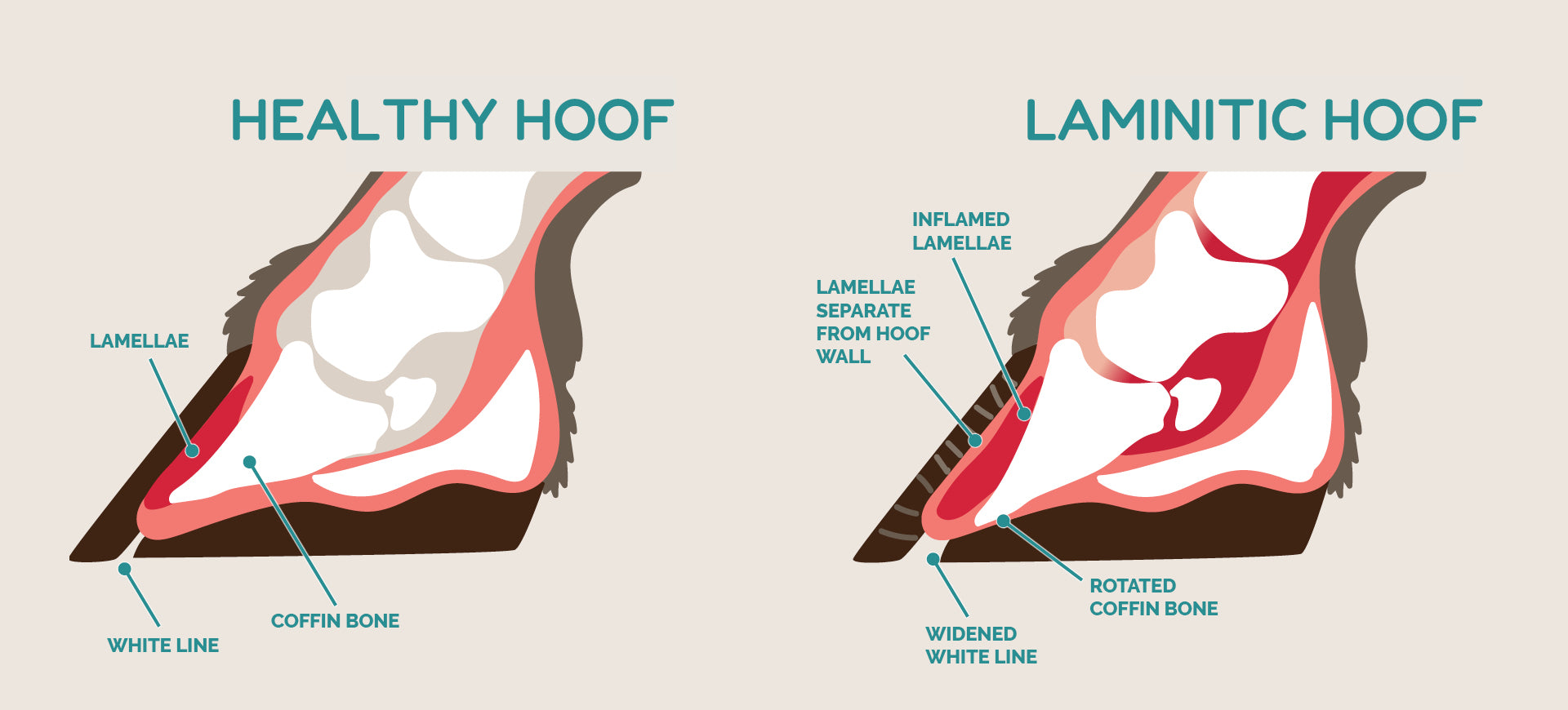
For veterinarians, horse owners, and caretakers looking for science-backed, minimally invasive, and natural ways to support recovery and improve quality of life, ozone therapy offers a promising and increasingly accessible path forward.
But maybe the question isn't whether ozone therapy is a viable treatment option but whether veterinary medicine is ready to embrace it.
Why Laminitis Is So Difficult to Manage?
Laminitis challenges even the most experienced veterinarians and caretakers because it involves complex, cascading biological processes. Treatment is not always straightforward or predictable, and recovery can vary widely. Here’s why:
MULTIFACTORAL PATHOLOGY
Laminitis isn’t just about inflammation; it involves vascular dysfunction, metabolic imbalance, immune dysregulation, and mechanical instability. This makes it difficult to treat with a single modality, success often requires a multimodal, long-term approach.
IRREVERSIBLE DAMAGE
By the time symptoms appear, significant damage may have already occurred to the laminae. In severe cases, the coffin bone may already be rotating or sinking, a condition that requires months of rehabilitative care and may not be fully reversible.
POOR CIRCULATION
The hoof is notoriously difficult to treat due to limited blood flow. Once inflammation sets in, oxygen and nutrients struggle to reach damaged areas, delaying healing. This is one of the key challenges ozone therapy is uniquely suited to address.
CHRONIC AND RECURRENT NATURE
Horses with metabolic issues are prone to repeated laminitic episodes. This can lead to chronic pain, abnormal hoof growth, and secondary infections such as abscesses or white line disease.
TREATMENT SIDE EFFECTS
While NSAIDs and corticosteroids may reduce inflammation, they come with side effects, particularly gastrointestinal and renal risks in horses. Long-term use is not ideal, prompting the search for gentler, yet effective alternatives like ozone.
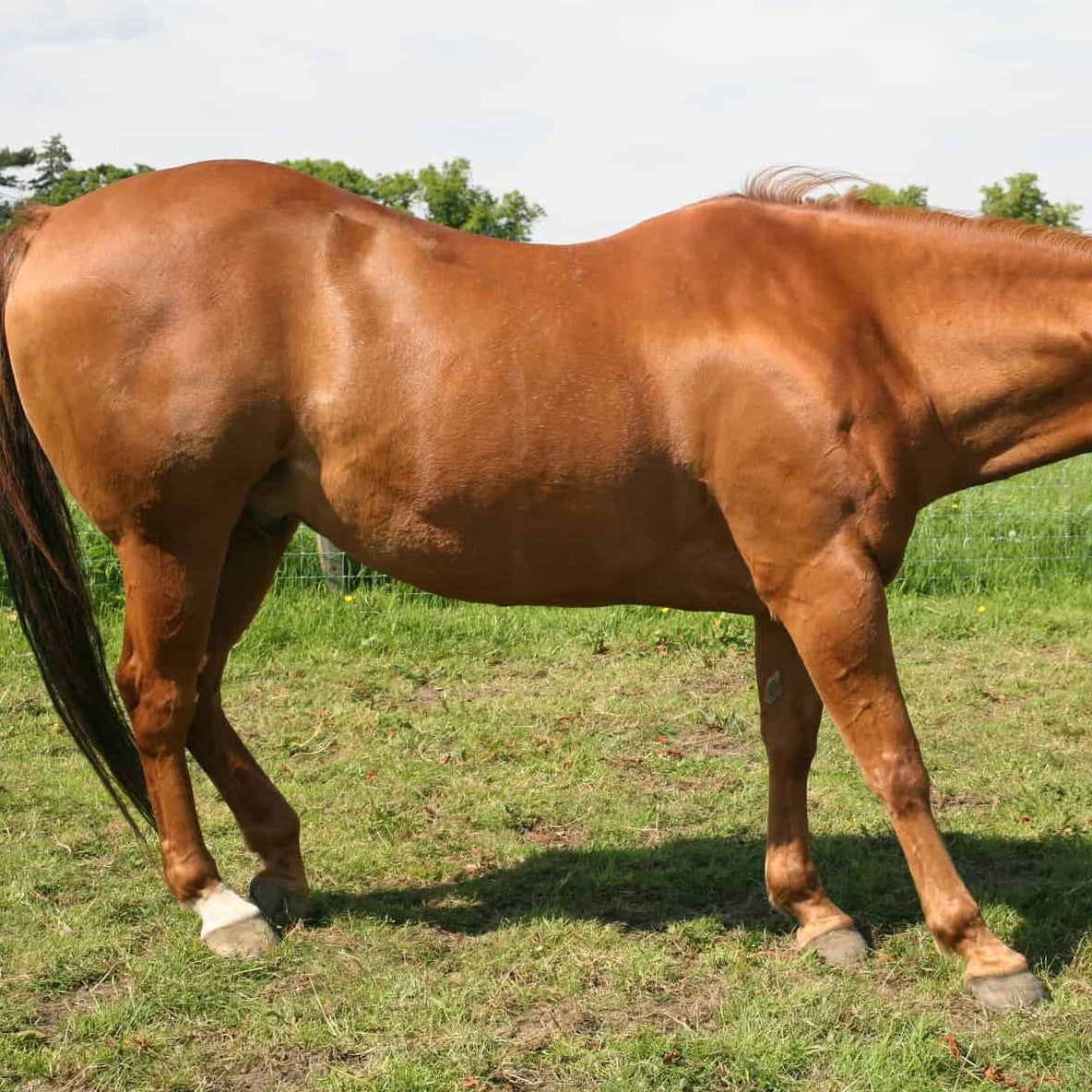
Symptoms of Laminitis
Knowing the signs can help in early diagnosis and intervention:
- Reluctance to move or shift weight from one hoof to another
- Heat in the hooves
- Increased digital pulse
- Lameness, especially on hard surfaces
- “Sawhorse” stance (leaning back on heels)
- Difficulty turning or walking in circles
- Hoof sensitivity or visible changes in hoof shape (in chronic cases)
PART 2: How to Treat Laminitis with Ozone Therapy
If you already do ozone therapy, you'll know that part of why it is so effective is because it can be administered in more than fourteen ways. As a veterinary professional, you'll need to understand how it can most effectively be administered depending on the condition you're treating.
First, let's talk about how we're administering ozone therapy and the equipment that you'll need to do this, and then we'll jump into how ozone is actually working to produce healing.
Administering Ozone for Laminitis
Ozone therapy’s effectiveness in equine medicine, particularly for laminitis, depends largely on how it is delivered. There are several methods that allow for both systemic and localized applications, each suited to different stages and severities of the disease.
Let's start with the two most common ways to administer ozone therapy in cases of laminitis. We would recommend a combination of rectal insufflation to decrease systemic inflammation as well as local gas injections into both sides of the heal through the digital cushion.
RECTAL INSUFFLATION
One of the most commonly used systemic methods is rectal insufflation, in which a carefully controlled dose of ozone gas is introduced into the rectum. The intestinal mucosa is rich in capillaries, allowing the ozone to be quickly absorbed into the bloodstream where it can exert full-body effects. This method is non-invasive, well-tolerated by most horses, and supports improved oxygenation, circulation, and detoxification throughout the body.
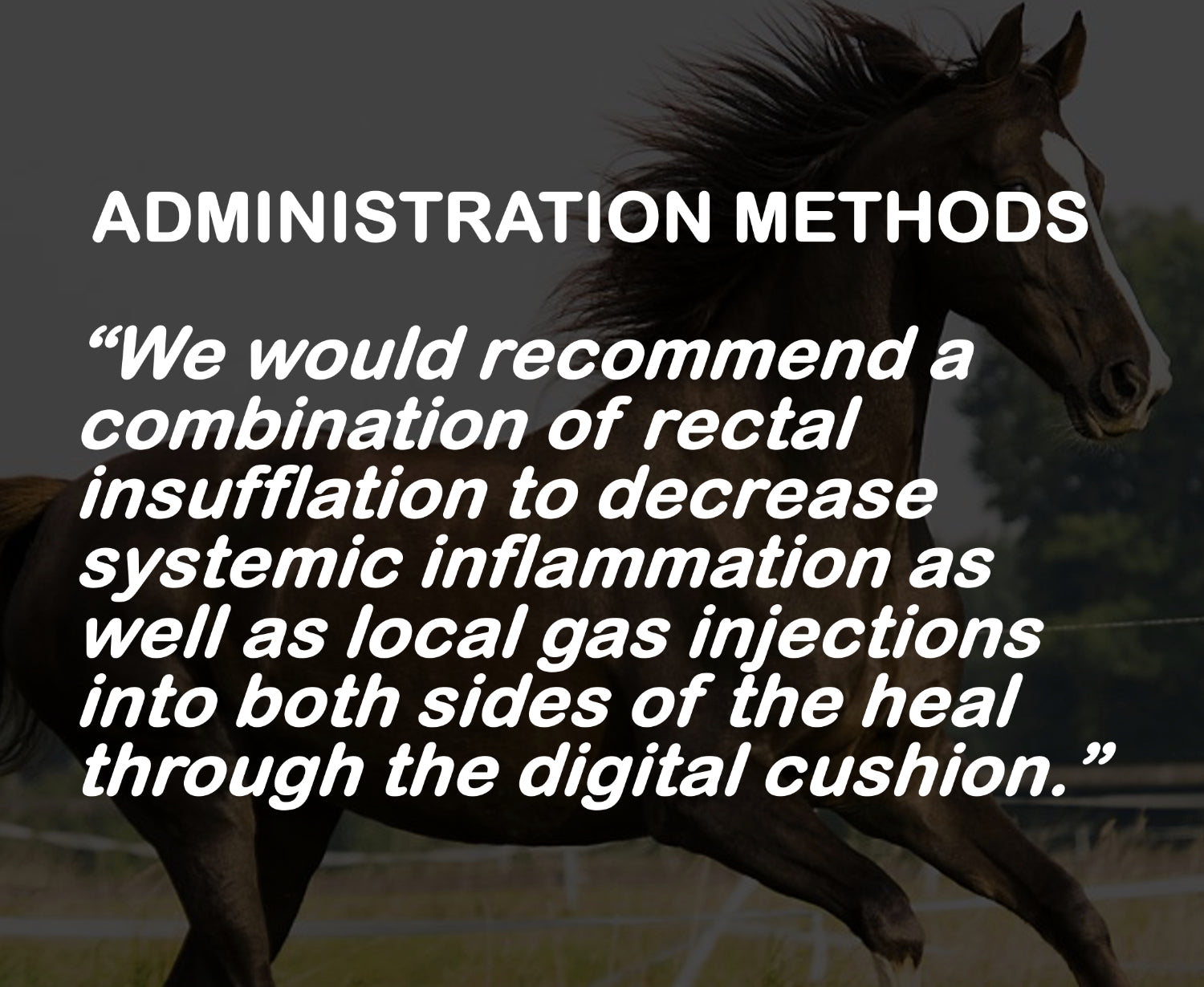
OZONE GAS INJECTIONS
These injections are typically made with fairly low concentration into the heel area to target deep inflammation, chronic pain, or tissue degeneration. Though more invasive, this methods allow ozone to reach tissues that may be inaccessible through topical or systemic routes and are particularly useful for laminitis.
Here are a few more routes that may be used in certain instances or when ozone gas injections aren't feasible.
IV OZONATED SALINE
Another systemic option is ozonated saline IV therapy, where ozone gas is infused into sterile saline, which is then administered intravenously under the supervision of a trained veterinarian.
This route delivers ozone’s benefits directly into the bloodstream and is particularly effective for managing widespread inflammation, metabolic dysregulation, and poor tissue perfusion, factors commonly seen in laminitic horses.
LIMB BAGGING
For more localized applications, ozone limb bagging can be used to apply ozone gas directly to the effected hoof. In these treatments, the horse’s hoof is enclosed in a bag and then filled with ozone gas for a prescribed period of time, allowing the gas to penetrate through the hoof wall and interact with inflamed or infected tissues. This method is highly effective for addressing localized inflammation, promoting circulation in the hoof, and managing superficial infections or abscesses.
TOPICAL OZONE OILS
Topical ozonated oils, such as ozonated olive or sunflower oil, offer a more accessible and longer-lasting option for at-home care or supportive therapy between gas treatments, but isn't a frontline treatment for laminitis. When applied to the coronet band or other compromised skin areas, ozonated oils slowly release oxygen-rich compounds that continue to support antimicrobial activity, reduce inflammation, and promote tissue regeneration over time.
Together, these delivery methods make ozone therapy a flexible and powerful tool in equine medicine, capable of being tailored to each horse’s unique condition, comfort level, and stage of laminitis.
Ozone Therapy Equipment
If you already have your equipment, you can skip this part, but if you're new, here's the basic pieces that you'll need.
- A Mobile Ozone Generator - You won't want to skimp on this. We have two great generator options that are built into a briefcase and provide you with all the power you'll need to produce ozone for any administration method you choose. This is the MOST IMPORTANT part of your package so you want to get it right.
- Since we're talking about doing rectal insufflation and injections, you'll need to have a rectal insufflation bag as well as catheters. Having a few ozone syringes to do injections will also be critical.
- The third and final piece will be an oxygen tank. Our generators have a compartment that will hold an M6 oxygen tank inside of the brief case to make travel easy and secure.
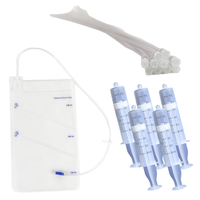
RECTAL INSUFFLATION SUPPLIES
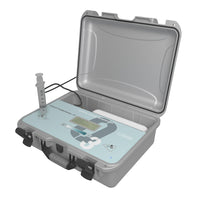
AN OZONE GENERATOR
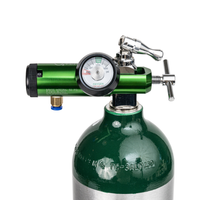
OXYGEN TANK
O3Vets has all the supplies that you'll need for anything ozone, however, needles, saline and standard supplies can be purchased through your supplier.
The Effects of Ozone Therapy in Laminitis Cases
One of the most compelling benefits of ozone therapy in the management of laminitis is its ability to regulate inflammation and relieve pain, without relying solely on pharmaceutical interventions. While nonsteroidal anti-inflammatory drugs (NSAIDs) like phenylbutazone and flunixin meglumine are commonly used in laminitis cases, their prolonged use can lead to undesirable side effects, including gastric ulcers, kidney damage, and colitis. Ozone therapy offers a natural, biologically intelligent alternative for long-term inflammation control.
IMPROVING CIRCULATION AND OXYGENATION
Poor perfusion and oxygen starvation of the hoof tissues are central to the progression of laminitis. Ozone therapy has been shown to:
- local microcirculation
- increase oxygen delivery to inflamed tissues
- Reduce blood viscosity
TARGETING INFLAMMATION
Ozone therapy reduces inflammation through a multi-layered mechanism that begins with a mild, controlled oxidative stimulus. Unlike harmful oxidative stress, which can damage tissues, this controlled oxidative effect triggers the body’s adaptive antioxidant responses, leading to powerful downstream effects.
- MODULATION OF PRO-INFLAMMATORY CYTOKINES - In laminitic horses, inflammation is largely driven by a cascade of signaling proteins known as cytokines, particularly TNF-α (Tumor Necrosis Factor-alpha) and IL-6 (Interleukin-6). These cytokines contribute to, Vascular damage, Increased pain sensitivity, and cellular breakdown in the laminaeResearch shows that ozone therapy reduces the expression of these pro-inflammatory cytokines, helping to calm the inflammatory response at the source.
- ACTIVATION OF ANTIOXIDANT DEFENSE SYSTEM - Ozone therapy stimulates the production of key antioxidant enzymes, including Superoxide dismutase (SOD), Catalase and Glutathione Peroxidase. These enzymes work together to neutralize excess free radicals, preventing oxidative damage and promoting the resolution of inflammation. This antioxidant effect is particularly valuable in the hoof, where limited circulation often makes it difficult for the body to naturally flush out harmful inflammatory byproducts.
- STIMULATION OF ENDOGENOUS CORTISOL - Ozone therapy also gently stimulates the adrenal glands to produce more endogenous cortisol, the body’s natural anti-inflammatory steroid hormone. This increase in cortisol helps suppress inflammation while avoiding the immune suppression and metabolic side effects associated with synthetic corticosteroids.
Inflammation in the laminae causes, pain and lameness, heat and swelling in the hoof, increased digital pulse, damage to blood vessels and connective tissues Left unchecked, this inflammation can result in irreversible structural changes in the hoof and ongoing suffering for the horse. By introducing ozone therapy early in the treatment process, caretakers and veterinarians can interrupt this inflammatory cascade before more serious damage occurs.
Veterinarians and horse owners using ozone therapy have reported noticeable improvements in comfort levels and hoof health within days to weeks of beginning treatment. Key signs of reduced inflammation include:
- Lower hoof temperature (less heat radiating from the hoof wall)
- Reduced digital pulse amplitude
- Decreased reluctance to walk or move
- Improved stance and posture
- Less reliance on high doses of NSAIDs or steroids For horses suffering from chronic laminitis, ozone therapy has also been credited with improving quality of life, allowing some animals to return to light work or pasture soundness that would not have been possible with traditional therapies alone.
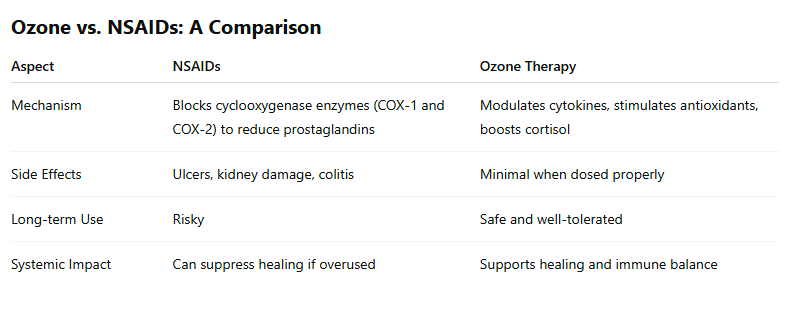
PROMOTING TISSUE REGENERATION
One of the most critical challenges in laminitis management is repairing the damage done to the laminae, the sensitive soft tissue structures that anchor the coffin bone to the hoof wall. Once inflammation disrupts blood flow and cellular integrity in these tissues, the horse’s body must work to regenerate the connective tissue matrix, restore vascular function, and rebuild structural stability.
Ozone therapy supports this regenerative process in several powerful ways. First, it stimulates the production of key growth factors involved in cellular repair and tissue development, helping accelerate recovery at the molecular level. Ozone also activates fibroblasts, the cells responsible for producing collagen and extracellular matrix proteins, as well as stem cell pathways that contribute to tissue renewal.
Additionally, ozone therapy enhances mitochondrial function, which is vital for cellular energy production and the overall metabolic performance of healing tissues. By boosting oxygen utilization and cellular ATP output, ozone can improve the resilience and responsiveness of cells in damaged hoof tissues. One especially effective use of ozone in promoting regeneration is the topical application of ozonated oils or ozone gas directly to the coronary band.
These treatments can stimulate hoof wall growth, improve tissue integrity, and support recovery in cases of chronic laminitis where traditional hoof care methods may not be sufficient on their own.
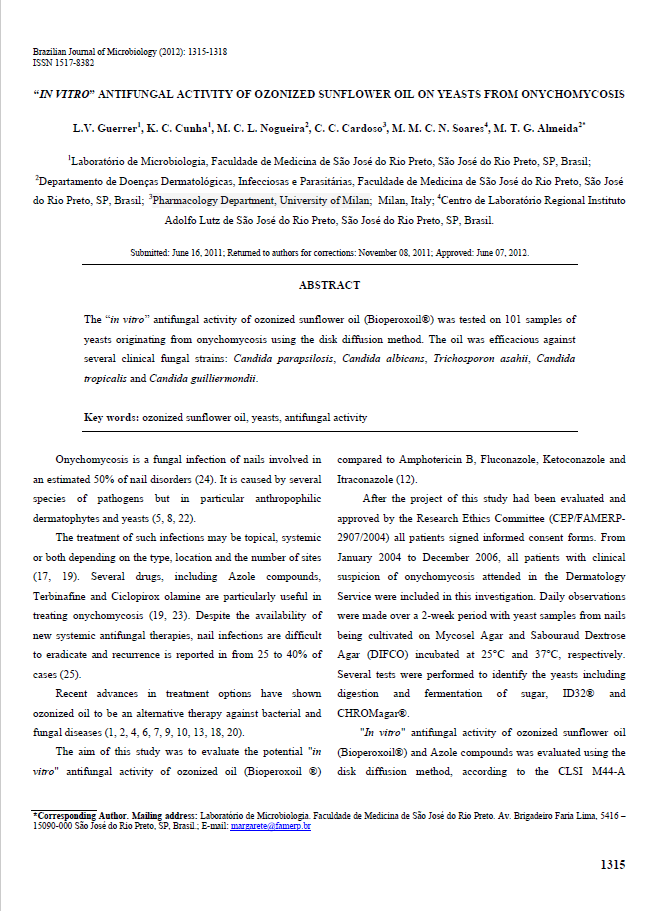
NATURAL ANTIMICROBIAL
In cases of sepsis-associated laminitis or where secondary infections are present, such as hoof abscesses, necrotic tissue, or systemic bacterial involvement, effective infection control becomes an urgent priority.
Ozone therapy offers a natural and highly effective antimicrobial solution without the drawbacks of conventional antibiotics. Ozone is a broad-spectrum antimicrobial agent capable of destroying bacteria, viruses, and fungi on contact by oxidizing their cell membranes and disrupting vital cellular processes. This makes it particularly useful in managing laminitic cases complicated by infection or poor hoof hygiene.
One unique advantage of ozone is its ability to disrupt biofilms, slimy, protective layers that bacteria form to shield themselves from antibiotics, making ozone therapy more effective in treating deep-seated infections where conventional drugs may fail.
Case Studies and Real-Life Results
Even though there aren’t a lot of large research studies on ozone therapy for laminitis yet, many veterinarians and horse owners are seeing great results. Real-world success stories and case reports are starting to show just how helpful ozone can be when added to traditional treatment plans.
CASE #1: Chronic Laminitis in a Pony with Insulin Problems
One 12-year-old pony had been struggling with chronic laminitis caused by insulin dysregulation (a condition similar to diabetes in people). The pony had repeated painful flare-ups, rotation of the coffin bone, and a lameness score of 4 out of 5, which meant he was extremely sore and reluctant to move. After trying the usual treatments (diet change, anti-inflammatories, and hoof trims) with limited success, the veterinarian introduced ozone therapy.
The pony received rectal ozone insufflation three times per week, along with topical ozonated olive oil applied to the coronet band and soles. After just two weeks, the pony started standing more comfortably and moving more easily. By six weeks, the lameness score had improved to a 2, hoof heat and pulse had decreased, and new healthy hoof wall was growing. His energy and appetite improved too. The vet was even able to reduce the pony’s use of pain meds.
Vet's perspective: “Adding ozone therapy to our laminitis protocol has allowed some horses to recover more quickly, especially when inflammation and tissue damage are severe.” – Dr. Alicia R., Equine Integrative Veterinarian
CASE #2
Another horse, a 17-year-old Warmblood, developed laminitis in one hoof after injuring a leg and shifting all his weight to the other limb (a condition called supporting-limb laminitis). Ozone limb bagging and IV ozonated saline therapy helped reduce pain, improve hoof quality, and got him back to gentle pasture turnout within a few months.
A senior mare with Cushing’s disease (PPID) and recurrent laminitis also responded well to ozone. She was treated with rectal ozone and injections near the hoof for two months. Her flare-ups became less frequent, and she needed fewer medications during the seasons when she usually struggled most.
Even though more scientific studies are needed, these cases give hope. When added to a proper treatment plan that includes diet, hoof care, and metabolic support, ozone therapy may offer a powerful, natural way to help horses recover from this painful condition.
Conclusion
Laminitis remains one of the most painful and complex conditions in equine medicine. While conventional treatments can provide critical support through diet management, corrective trimming, and medication, many horses continue to struggle with chronic pain, inflammation, and limited recovery. Ozone therapy offers a unique and promising complement to traditional care, one that works with the body rather than against it.
By reducing inflammation, enhancing tissue regeneration, controlling infection, and supporting systemic detoxification and oxygenation, ozone therapy helps address several of the root causes of laminitis. It has shown particular promise in cases involving insulin dysregulation, metabolic syndrome, Cushing’s disease, and supporting-limb laminitis. While formal clinical trials are still catching up, growing numbers of equine veterinarians are reporting successful outcomes using ozone in the field, offering hope for horses who previously had limited options.
When used wisely, ozone has the potential to dramatically improve quality of life, accelerate healing, and offer a safe, natural path toward hoof recovery and whole-body wellness.
References
- Ozone: A New Medical Drug (2nd ed.). Springer.
- Ozone: Science & Engineering, 34(6), 408–424. https://doi.org/10.1080/01919512.2012.717847
- European Journal of Pharmacology, 523(1–3), 151–161. https://doi.org/10.1016/j.ejphar.2005.09.023
- Pharmacological Research, 55(6), 501–506. https://doi.org/10.1016/j.phrs.2007.03.011
- Compendium on Continuing Education for the Practicing Veterinarian, 20(6), 662–673.
- Veterinary Clinics of North America: Equine Practice, 18(2), 271–293. https://doi.org/10.1016/S0749-0739(02)00011-9
- American Journal of Physiology-Regulatory, Integrative and Comparative Physiology, 302(3), R252–R265. https://doi.org/10.1152/ajpregu.00482.2011
- Journal of Equine Veterinary Science, 45, 103–109. https://doi.org/10.1016/j.jevs.2016.06.084
- Veterinary Practice News. Retrieved from https://www.veterinarypracticenews.com/ozone-therapy-in-veterinary-medicine/
- Journal of Alternative and Complementary Medicine, 11(2), 363–367. https://doi.org/10.1089/acm.2005.11.363
Net Orders Checkout
| Item | Price | Qty | Total | |
|---|---|---|---|---|
| Subtotal |
$0.00 |
|||
| Shipping | ||||
| Total | ||||
